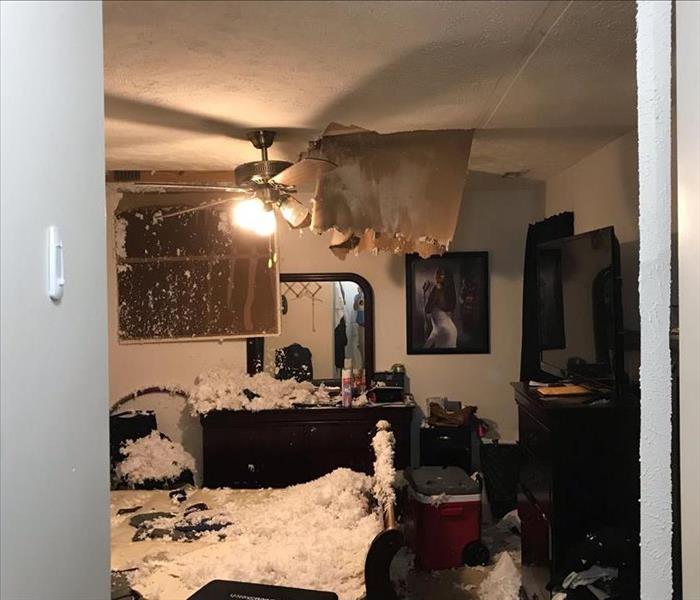9 Tips for Restoring Furniture After Water Damage
2/21/2024 (Permalink)
Water damage wreaks havoc on furniture, causing stains, warping, and deterioration. Salvaging water-damaged furniture requires immediate action and the right approach. Here are some practical steps and insights to help you salvage your furniture after a water loss:
1. Act Swiftly
Time is of the essence when dealing with water-damaged furniture. Begin the restoration process as soon as possible to prevent further deterioration. The longer furniture remains wet, the higher the chances of irreparable damage and mold growth.
2. Assess the Damage
Before initiating any restoration, carefully assess the extent of the damage. Check for water stains, warping, mold growth, and structural integrity issues. This evaluation helps determine the appropriate restoration methods for each piece of furniture.
3. Remove Excess Moisture
Start by blotting excess water using clean, dry towels or cloths. Avoid rubbing the affected areas, as it may worsen the damage. For wooden furniture, use a soft cloth to gently absorb moisture without applying excessive pressure.
4. Dry Thoroughly
Proper drying is crucial to prevent further damage and mold growth. Place water-damaged furniture in a well-ventilated area with adequate airflow. Utilize fans or dehumidifiers to expedite the drying process. For upholstered pieces, remove cushions and thoroughly dry them separately.
5. Clean and Sanitize
After drying, clean the furniture surfaces using a mild detergent or cleaning solution. This step helps remove dirt, grime, and any remaining traces of moisture. For wooden furniture, use a wood cleaner to restore its shine and luster.
6. Prevent Mold
Mold growth is a common concern after water damage. To prevent mold, use a mixture of water and vinegar or a commercial disinfectant to sanitize furniture surfaces thoroughly. Ensure proper ventilation during and after the cleaning process.
7. Address Wood Furniture
For wooden furniture, addressing warping or swelling is crucial. Gently reshape warped wood by applying pressure evenly across the surface. Avoid exposing wood to direct sunlight or heat, as it may cause further damage.
8. Consider Professional Assistance
Some severe water damage cases may require professional restoration services. If you're unsure about the best approach or if the damage is extensive, seek assistance from restoration experts, like SERVPRO of Southwest Raleigh/Holly Springs.
9. Monitor and Maintain
After restoration, keep a close eye on the furniture to ensure it's completely dry and free of mold. Regular maintenance, such as dusting and occasional cleaning, helps prevent future damage.
In conclusion, restoring water-damaged furniture demands prompt action and careful execution. By following these expert tips and taking proactive measures, you increase the likelihood of salvaging your furniture and minimizing the impact of water damage. Remember, patience and proper techniques are essential in the restoration process to preserve the integrity and beauty of your furniture.


 24/7 Emergency Service
24/7 Emergency Service
